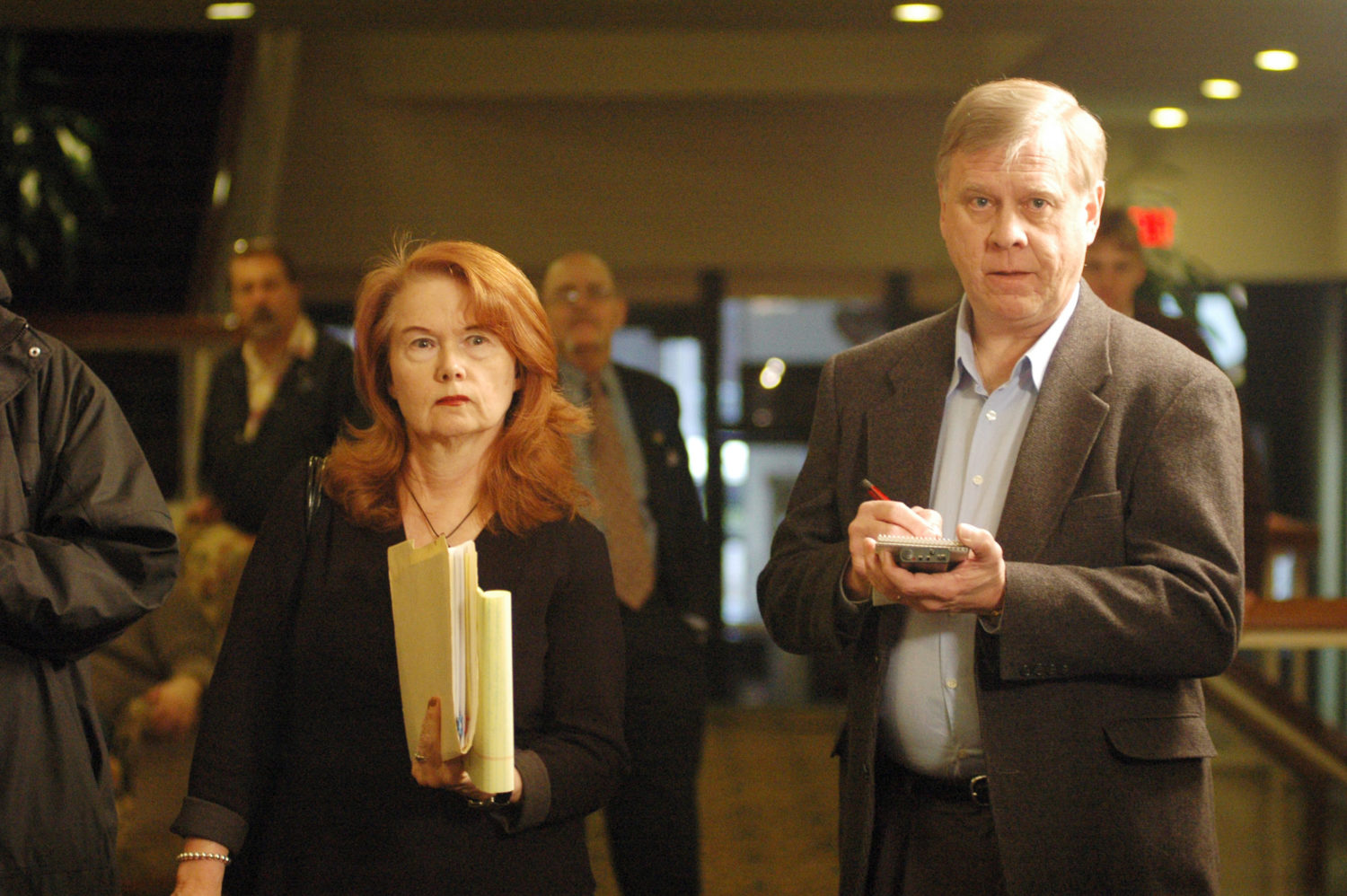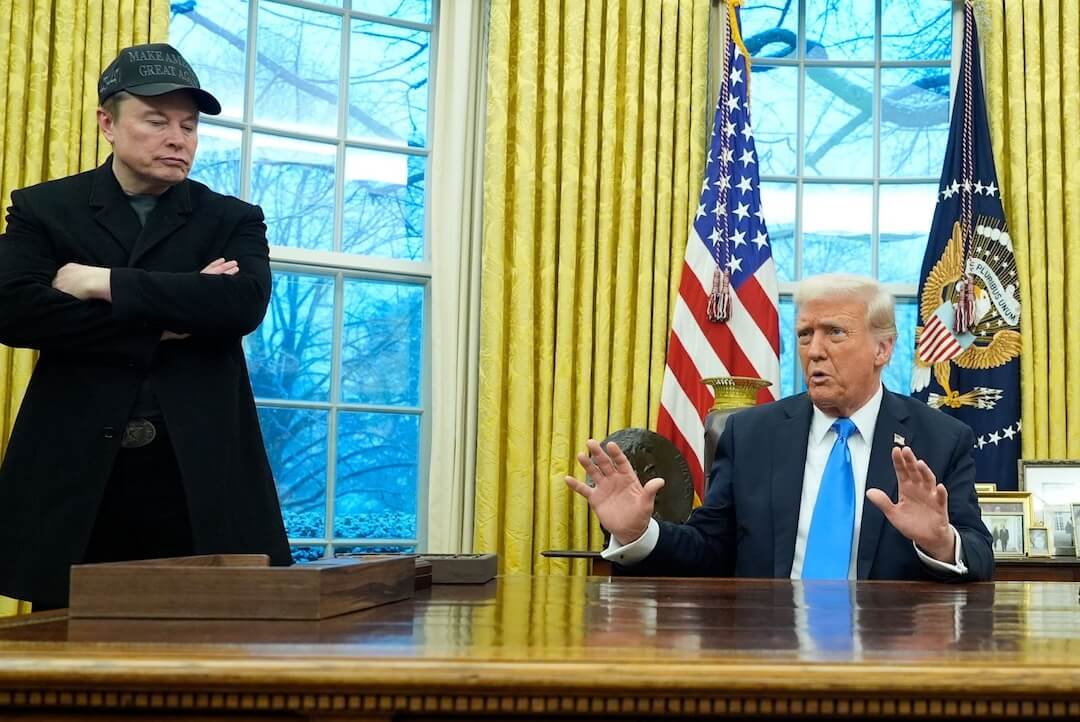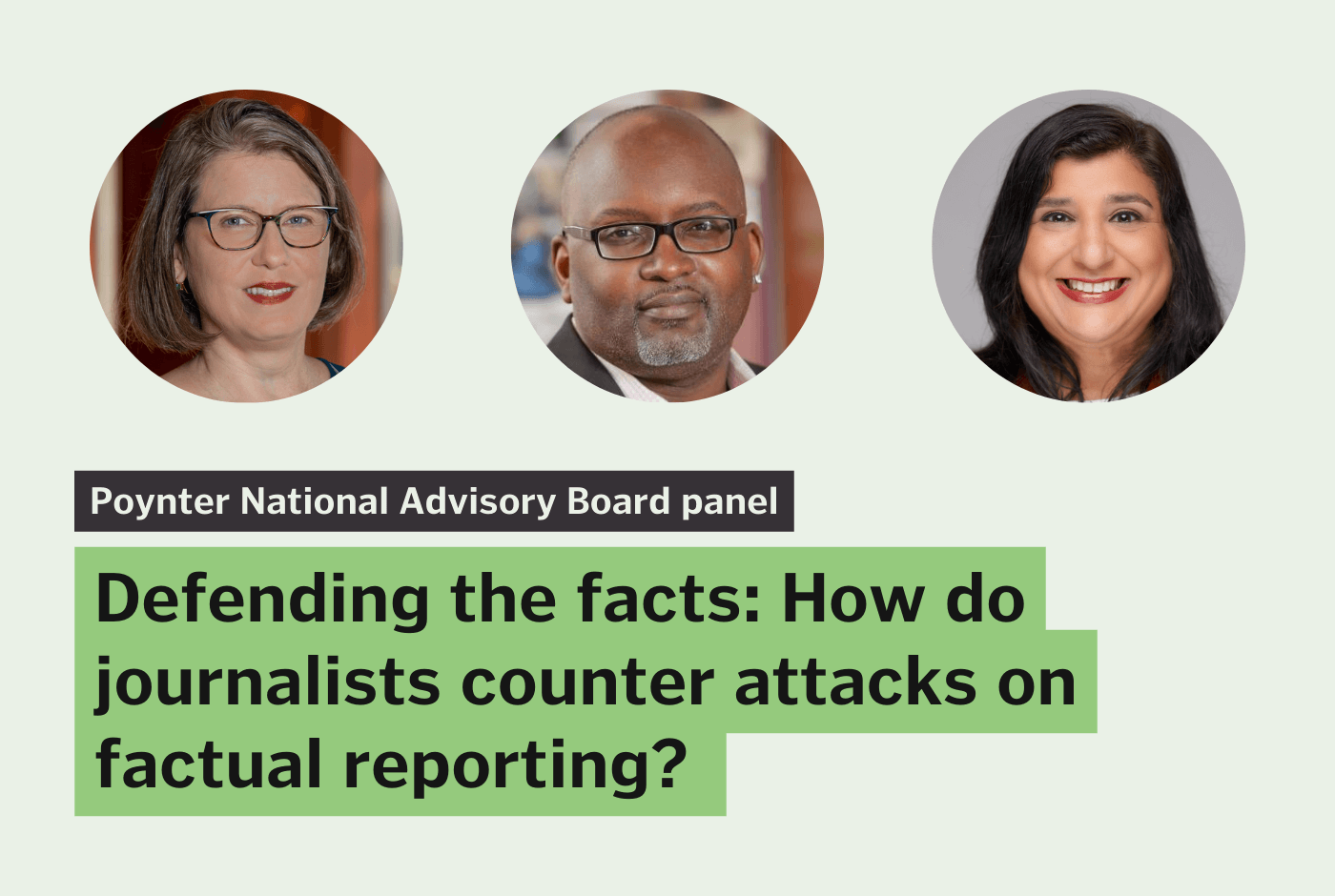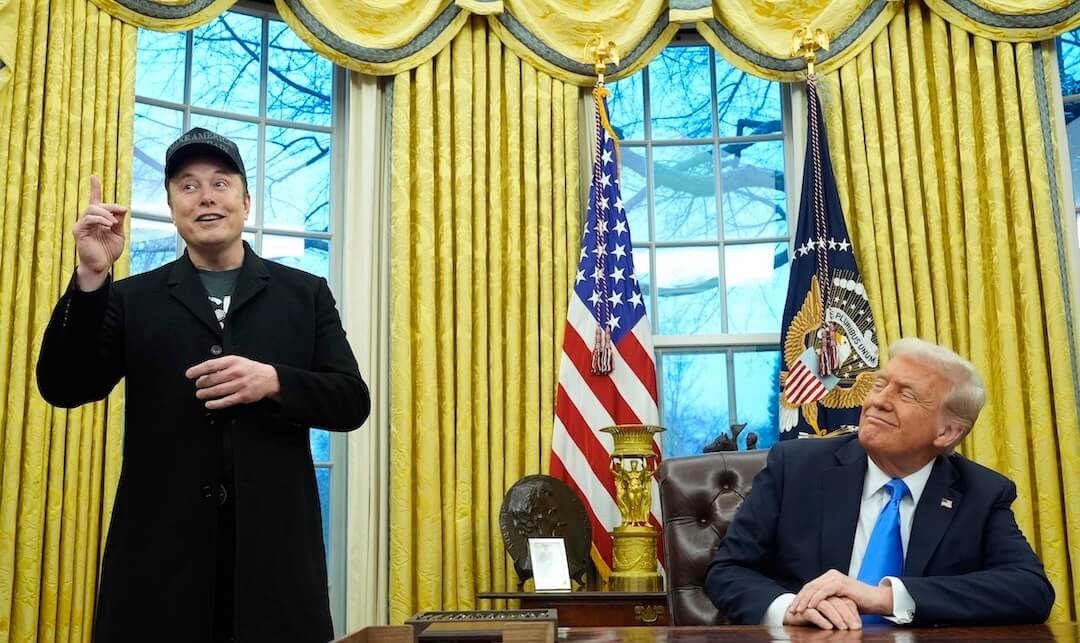Bill Morlin was a legendary investigative reporter who, over the span of five decades, exposed neo-Nazis, city mayors and con artists to the light of public scrutiny. He died Nov. 20 from complications of an intestinal infection. He was 75.
A few days before he died, when doctors removed an intubation tube, allowing him to talk again, his first words to his wife, Connie, were, “You better get a notebook and pen, to write all this stuff down.” He then proceeded to tell her who to contact about his two open investigations, and several other projects he was working on. He could not stop.
He formally retired from The Spokesman-Review, the Spokane, Washington newspaper, in 2009. The next day he started his own private investigation company.
I had been a police reporter for a couple months in Coeur d’Alene, Idaho, when he walked through the door of our bureau and offered to show me a few tricks.
I didn’t know he was a legend. To my 22-year-old Cyndi Lauper aesthetic, he looked like an unfashionable dad, in baggy khaki pants, a nondescript button-down shirt and a loose windbreaker that sloped off his shoulders and fell to his hips. Back in the 1980s, if Morlin was going to federal court in Spokane, he would wear the standard jacket and tie. But when he was out in the field he donned his just-a-guy uniform.
The very first lesson Morlin offered, by example not suggestion, was to maybe not stick out so much. My vintage clothes and giant earrings were definitely cute, but they marked me as an outsider in the Idaho Panhandle in 1989.
As a well-sourced reporter covering the federal beat, he was the first journalist to recognize the growing presence of neo-Nazis in the rural areas around Spokane. He spent his entire career documenting a threat that many others were slow to recognize and maybe even now don’t completely comprehend.
On Jan. 6, 2021, as insurrectionists stormed the U.S. Capitol, he watched the coverage on television. “He was pointing out to me all these things that mostly the regular media didn’t know,” Connie Morlin told me. “Different emblems, different flags, different people he recognized.”
Within hours, his phone was blowing up with public and private investigators who were starting the process of tracking down the invaders with the most knowledgeable person they knew.
When I took the job in North Idaho, I assumed that small cities meant small crimes. That spring, the local law enforcement agencies I covered were gearing up for two events: a skinhead march along a public bike path north of town (meaning it didn’t need a permit), and the annual Aryan Nations Congress, a gathering of white supremacists in Hayden, Idaho.
When I expressed my shock that these hate groups were so bold, my editors assured me that they were a bunch of bozos seeking attention, and that we should minimize our coverage. Morlin told me to ignore my editors and report the facts.
He told me to trust my instincts, and not rely on my editors’ enthusiasm. He said, “Make them spike your story.”
Then, at his insistence, we jumped in his car and he drove me less than a mile to a condo building overlooking Lake Coeur d’Alene. We were buzzed in by people he knew, rode an elevator to a mid-level floor and walked into a nondescript residential unit that was crawling with half a dozen G-men.
It was like something out of the X-Files, except they weren’t hunting aliens. They were monitoring domestic terrorists, right there in a boring condo building in downtown Coeur d’Alene.
Morlin was on a first-name basis with most of the FBI agents in the secret office. He had stopped by the Aryan Nations compound earlier that morning to do some interviews. Folded up in his reporter’s notebook was a flier he’d picked up, encouraging attendance at a cross burning.
It wasn’t clear to me if the agents were completely fine with Morlin waltzing into their office along with a sidekick. Two of them chatted him up in the entryway while the rest went about their business. They did not invite us in and make us feel welcome. But they didn’t kick us out either.
He traded information with the agents. He dropped a couple of nuggets he’d be putting into his story, they dropped a couple names of people they were expecting. While Morlin took notes, he dangled the flier. One agent was so curious he asked Morlin if he could make a copy (by faxing it to himself, because they didn’t have a real copy machine.) Morlin was clearly pleased.
As we left, Morlin quizzed me about my best sources in every law enforcement agency I covered. There were a lot: several small police departments, five county sheriff’s departments, the state police and the federal agencies. He told me to get the desk phone, the home phone and the pager numbers (you know, the things we carried before cell phones) for every single person I ever talked to. And then he told me to make sure that twice a year, I probed each of them for specific information on cases or issues with the department.
His theory, which bore out in my experience, was that if you gave sources a chance to share information with you, you could build a relationship. It didn’t do any good to have their number and not use it, or wait until you have a really big ask.
Those techniques also helped him stay in touch with the source who would eventually become his second wife. Connie had first tipped off the paper in 1993 to a scam artist who, among her many cons, was taking donated food from the Department of Agriculture and charging foster homes money for it. Morlin nailed down that story, even catching the scam artist’s son burying thousands of pounds of food they couldn’t sell with a backhoe, and tracking her down at a highway rest stop where she had a permit to solicit donations to her bogus charity.
“He would call me to check in every six months or so after that,” she said. They reconnected more deeply in 1995 after a mutual friend died by suicide and a few months later started dating.
By that time, Morlin was well established as an authority on extremism. His reporting would later contribute to the downfall of the Aryan Nations.
He was also a single dad. He had been raising two sons on his own his entire career. A few months into their new relationship, he called to ask her to go check on his boys. White supremacists had just thrown a pipe bomb into one of the newspaper’s regional bureaus. Morlin was on a reporting trip in Montana. He wanted her to tell his college-age sons to not touch any packages left on the doorstep.
Morlin was intensely private. Most of us did not know he was raising his sons alone. He kept his files locked and his phone unlisted. He never created a social media profile.
He considered it his personal mission to teach other reporters to do what he did, to expose dark secrets by bringing them into the light of the day one detail at a time. One of his favorite sayings was, “You don’t have to have every last nail in the wood before the coffin is built.”
Morlin was a local shoe-leather reporter so well-sourced among the cops, feds, lawyers, coroners, informants, small-time and big-time criminals, funeral home directors, elected officials and mid-level bureaucrats of the Inland Northwest, there was not a crime-related story that he couldn’t get the details on in a matter of hours.
His most famous story was about a white separatist named Randy Weaver holed up with his wife and kids on a hilltop in Boundary County, Idaho, while the U.S. Marshals tried to figure out how to arrest him on a weapon charge. After looking at a map of the area, Morlin was the first person to publicly call the location Ruby Ridge.
Jess Walter, now an accomplished novelist, was at that time a step ahead of me in seniority as a police reporter in the main office in Spokane. He worked closely with Morlin, and sat a couple desks away.
“Bill with a story was like a yellow lab with a stick — he just wanted to show you what he’d found. And go get another stick,” Walter told a crowd of friends and family who gathered to say goodbye. “And editors were constantly asking him to polish the stick, or whittle the stick down, or paint the stick, or to turn the stick into a lamp or a weeklong series.”
“He was highly annoyed by the fancy people with degrees from places like Stanford,” Walter told me. The two worked together often.
Morlin was the third generation descended from Scandinavian immigrants to grow up in his home in Spokane’s Peaceful Valley, a tract of land with tiny houses along the banks of the Spokane River and separated from a historically more prestigious neighborhood of Browne’s Addition by a steep cliff.
As a kid he created a neighborhood newspaper with a typeset kit and convinced his sisters to deliver the product. As a teenager, he managed three paper routes. After high school, he attended the nearby Eastern Washington University where he edited the student paper and interned for The Associated Press. He was hired by the Spokane Chronicle, a rowdy afternoon paper, at a time when Spokane was still a two-paper town.
By the time the Chronicle merged with The Spokesman-Review in the 1980s, Morlin was already considered old-fashioned. And he knew it, too.
Walter was almost 20 years Morlin’s junior, and definitely enamored with character development and narrative flair. (As a 20-something, Walter would walk into the fiction section of bookstores and libraries to see whose novels would be next to his.) Morlin liked him anyway. They were both homegrown Spokane kids who attended the local state college.
If the secret to Morlin’s success was his vast network of sources, his backup plan was to save everything in the tower of cardboard boxes and metal filing cabinets that surrounded his desk in the back of the newsroom.
On April 19, 1995, Morlin and I were standing in front of the newsroom television watching the aftermath of the Murrah Federal Building bombing in Oklahoma City. On TV, a reporter described the suspects as two Middle Eastern men. He went on to describe the bomb as a Ryder truck filled with fertilizer.
“That’s straight out of ‘The Turner Diaries,’” Morlin announced to no one. “The Turner Diaries” was an obscure novel published in 1978 that depicts an inside account of a warrior in a revolution that overthrows the U.S. government. At the time, the book was only available through the Neo Nazi National Alliance. Morlin had a copy in his mountain of files, because he never threw anything away. He rushed back to his desk and unlocked the bottom drawer and within minutes had located the book and the page that described how to make a fertilizer bomb and ignite it in a rented truck.
I was not aware until I read in his official obituary that he had turned in a story that day, reporting out that the bombers were likely white supremacists, not Islamic terrorists. Editors refused to publish it. Too speculative, they said. Two days later the suspects were arrested and they indeed had ties to the Aryan Nations.
Morlin was not without his flaws. His copy was often rough. During one of those glorious moments where the whole staff was working the same breaking news story, an editor asked me to call up Morlin’s piece to determine if it could stand alone or if it should be combined with another reporter’s work.
When I opened up the file, at first I thought I had his notes. There were numerous typos and a lot of jargon. The sentences rambled on for entire paragraphs. When I expressed surprise, the editor just mumbled, “He’s a great reporter.” I couldn’t tell if he said it with respect or irritation. Maybe both.
“I remember that he was extremely fast. He would bat things out and it would take editing,” fellow investigative reporter Karen Dorn Steele said. “He wasn’t there to write long, narrative, flowery pieces.”
Walter told me that he once suggested a circular structure to a story the two were sharing a byline on. Morlin listened blankly and replied, “Just do the thing where the editors say, ‘It’s pretty,’ and then put it in the paper.”
That didn’t stop Walter from sneaking in writing tips on the sly. On one story the two reporters learned that a mafia informer who’d been relocated to Spokane as part of the federal witness protection program had killed a drug dealer and fled to Salt Lake where he’d been arrested. (This later became the inspiration for Walter’s first novel, “Citizen Vince”). The reporters knew the guy’s date of birth, but not his real name, which is how he’d been booked.
So they scoured the jail records until they found the matching birth date: Nicholas Mitola. On that occasion, Walter was writing the main story and Morlin was doing a sidebar. “And when I looked at it, it was just perfect,” Walter recalled. “And so I told him it was good.”
Clearly pleased with Walter’s praise, Morlin punched his partner in the arm and said, “Shorter sentences, huh buddy?”
Morlin and Walter emerged from the Ruby Ridge standoff with different opinions of who the bad guys were. To recap the vital facts, the U.S. Marshals had charged Randy Weaver with sawing off a shotgun after a federal informant had gone up to Weaver’s mountaintop retreat and asked him to do it.
While trying to arrest Weaver, marshals killed his son, Sam, and wife, Vicki, who was shot in the head by an FBI sharpshooter while she was holding their infant. Eventually the original charges against Weaver were declared entrapment and a jury determined that the federal government violated the family’s civil rights. Walter’s book, “Every Knee Shall Bow,” told the other side of the story.
“There weren’t a lot of morally gray areas for Bill,” Walter said. “It took a while for Bill to see the nuance. What happened to the Weaver family didn’t change their abhorrent views, but it required that you see federal law enforcement in a different light.”
Morlin did have a very good BS detector, Dorn Steele told me. “He had an ear for hypocrisy.”
That was the driving force behind his investigation into Spokane Mayor Jim West, a former state legislator, who had built his reputation as a conservative ally. When Morlin’s reporting in 2003 revealed that West was using his city hall perks to meet and date younger men, critics questioned the exact purpose of the newspaper’s investigation. Was the story about an abuse of government resources, the hypocrisy of a conservative politician, or was it just about outing a closeted mayor?
Morlin had hired a private eye to pose as a fictional 18-year-old boy in a gay chatroom.
While those flaws detracted from the solid reporting, it was not enough to undermine the central claim that West was abusing his power. Although West was investigated, he was never charged with any crimes. Voters recalled him in 2005.
In addition to starting his own private investigation company in his retirement, Morlin continued reporting on extremism for the Southern Poverty Law Center.
Through that work, he covered both of the Bundy family’s armed standoffs with the federal government and both of the trials, from which the Bundys walked free.
That’s how he met Portland-based freelance journalist Leah Sottile. After the 2016 trial over the occupation of the Malheur National Wildlife Refuge ended in an acquittal for the Bundys, Sottile said she and other reporters noticed a sea change.
“A week later Trump was elected and suddenly the rhetoric we were hearing in these circles was being repeated by the president,” she said. “Extremism was a hot beat.”
Morlin and Sottile became mentor-mentee during the Bundy family’s 2017 federal trial over grazing land fees. Sottile was sent by The Washington Post to cover the opening arguments. But she stayed for the whole trial.
I have been a fan of Sottile’s work since her first podcast, “Bundyville,” debuted in 2018. Although I knew she had interviewed him as an expert, I had no idea Morlin was her mentor until I started this reporting project.
If there’s a theme that runs through her reporting, Sottile, now 40, told me she’s stuck on people who find themselves on the fringes of society. At the Bundy trial, she was suddenly immersed in a world of people who feel persecuted and believe it would be just and reasonable to overthrow the federal government.
“People were not getting that these anti-government things (the Bundys) were expressing were commonly held views in the West,” she said.
Every night the reporters covering that trial in Las Vegas would end up in a bar, and often Sottile would find herself prodding Morlin to share his insights. After 30-plus years covering extremists, Morlin’s knowledge was head and shoulders above the other reporters. The two shared a common frustration: editors who could not see the story.
When that court proceeding ended in a mistrial, she began a reporting quest to explain how Cliven Bundy became a central figure in the patriot movement. Sottile pitched the project that would eventually become the groundbreaking and award-winning podcast “Bundyville.”
A dozen newsrooms rejected the idea before Longreads finally suggested she turn it into a podcast. With Morlin’s guidance, she traced an arc from Ruby Ridge to Cliven Bundy.
In a second podcast project with the BBC, “Two Minutes Past Nine,” Sottile draws a direct connection between the Oklahoma City bombing and the counterprotesters, like the Proud Boys, who confronted and terrorized Black Lives Matters demonstrations in the summer of 2020.
Although he was patient and generous, Sottile said Morlin was also baffled by her approach. He would often call her up and ask her when her work was going to see the light of day.
“I think he was a little confused. I was fixated on literary journalism, bringing first person into the story through a podcast,” she said. “I don’t know that he had ever listened to a podcast.”
Sottile had talked to Morlin just before he was admitted to the hospital. He had been chasing new leads two days earlier about the unsolved murder of Julie Weflen, an electric company employee who disappeared on the job in 1987.
Although there’s many more journalists covering American extremists, Sottile is doubtful that any of them will have the stamina or endurance that Morlin brought to the job.
“It’s a dark place to dwell in journalism, but somehow he made it really fun,” Sottile said. “I think it was because of the chase.”
That’s what I’ll remember most. While I was often wracked with doubt about my work, Morlin was full of enthusiasm. One of the last crime stories we worked on together was about a school counselor in a small town who had promised girls he could get them modeling contracts, and instead tricked them into making pornography.
From a tip, Morlin had the name of the counselor and a handful of details about the students he targeted. At his encouragement, on a dreary January day, a photographer and I drove through the snow, to the nearby town to see what we could find. I’d managed to find and interview two of the victims. They told me how they believed their counselor had contacts in the modeling industry who could help them see the world beyond Davenport, Washington.
The story was depressing. The day had been very cold and gray. I had so few details from the women that I could barely eke out a sidebar. But when I got back to the newsroom, Morlin was thrilled.
He walked back and forth between his desk and mine as I wrote. He wrote down their names and numbers. He thanked me. He congratulated me. It was the last story I would write before taking my first leave.
The whole time I was off, I thought about that feeling of getting a story that no one else had, however bare, and bringing it back.
There are so many reporters out there today chasing leads that Morlin gave them. Even from the grave, through the many reporters he helped along the way, Morlin is still all about the chase.







